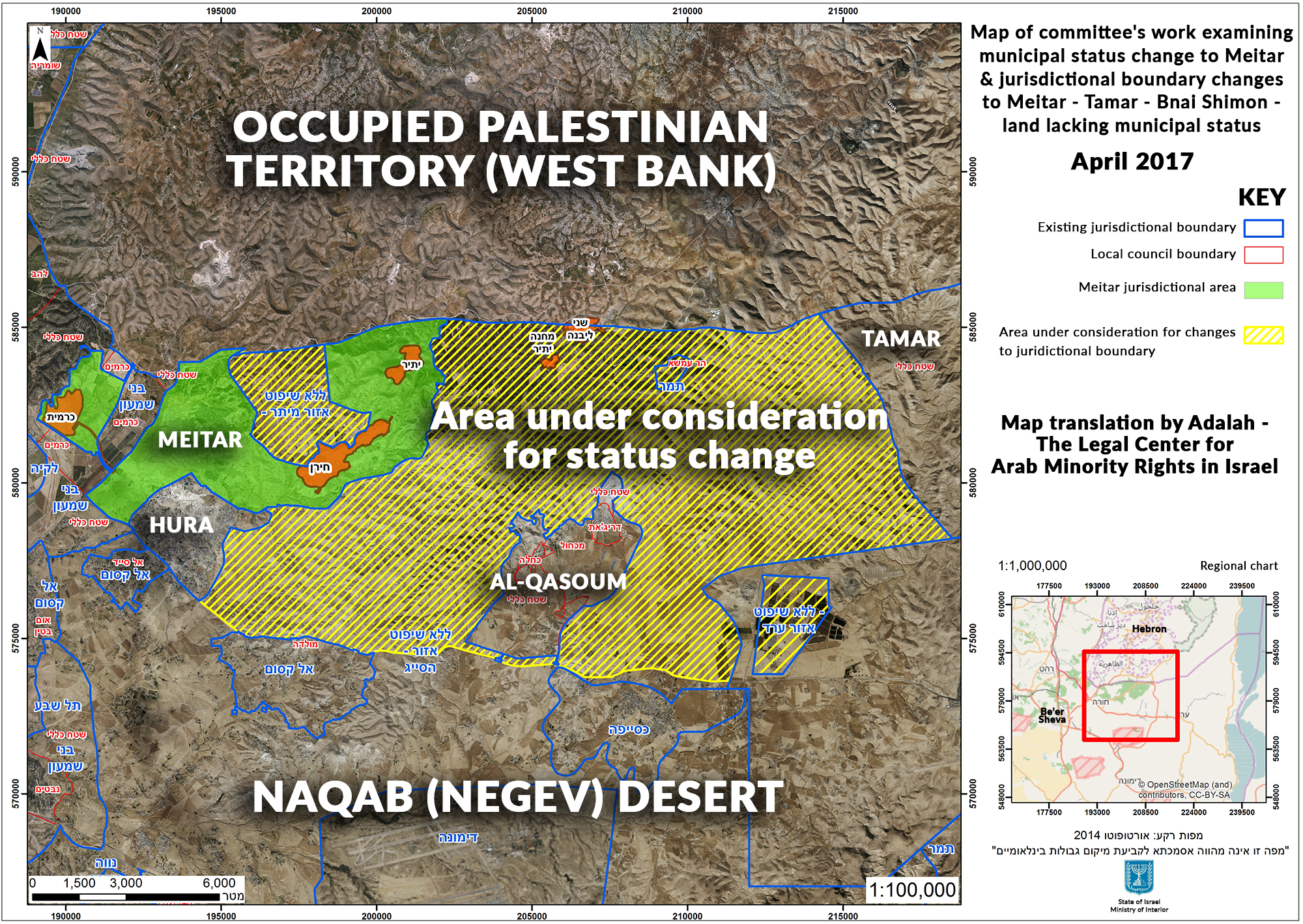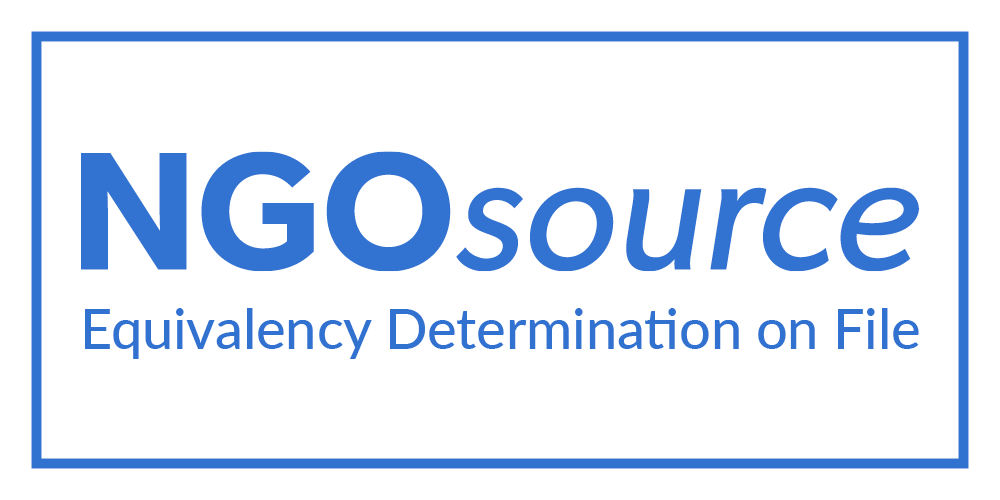Israeli desert development plan promotes building new Jewish towns, ignores existing Bedouin towns
Adalah – The Legal Center for Arab Minority Rights in Israel sent a letter on 1 August 2017 to an Israeli Interior Ministry committee demanding that it refrain from allocating additional lands to regional councils for new Jewish communities in the Naqab (Negev) desert region. The plan's official map reveals that existing Bedouin communities are explicitly excluded from any potential future development.
(Click map for high-resolution file)
In the wake of a government decision to establish new Jewish communities in the Mevo'ot Arad area, the ministry's Geographic Committee is charged with deciding whether to allocate the lands between the city of Arad and the Bedouin town of Hura (marked yellow in the above map) to the councils of Tamar, Meitar, Bnai Shimon and expand their existing borders. The committee will also determine which council will be responsible for establishing the new Jewish communities. The planning and housing needs and rights of Bedouin citizens in the areahave been disregarded throughout this process.
Adalah Attorney Myssana Morany wrote in her letter that, "a local authority's area of jurisdiction sets its developmental horizons and constitutes its tax and independent revenue base. The alteration of a local authority's jurisdictional boundaries is the most vital tool for the distribution of municipal wealth. Therefore, there is a particular importance to undertaking a comprehensive study of the relevant facts on the ground and to taking distributive and corrective justice into consideration."
The map of the proposed plan "clearly shows that the desired land surrounds a number of [Bedouin] towns in the Al-Qasoum Regional Council (Drijat, Kukhlah, and Makhoul) and turns them into enclaves [surrounded by land controlled by another regional council]. This step will block the future development of these towns and of the Al-Qasoum Regional Council, which has an area of jurisdiction of just 38,000 dunams [~9,400 acres] – an area which is not sufficient to allow for any economic development."
Adalah also emphasized in the letter that tens of thousands of Bedouin citizens are living in unrecognized villages that do not even appear on the map of the proposed regional council expansion. The Israeli authorities, likewise, ignore the needs of these communities.
"Any arrangement related to municipal annexation and planning must take into account the existing situation on the ground and find a fair and appropriate solution for residents, while also recognizing these villages and enabling their development," Attorney Morany wrote in the letter.
Israel's history of forced concentration of Bedouin
Some 80,000-90,000 Bedouin residents live in 36 unrecognized villages in the Naqab. The state of Israel has sought to concentrate the Bedouin population in recognized areas through forced displacement and evacuation and the demolition of the unrecognized villages, in violation of the residents' rights to property, dignity, equality, and due process.
The forced eviction and concentration of the Bedouin community were established as central pillars of the government's policy towards them during the military regime period (1948-1966) that followed the founding of the State of Israel. It sought to strictly restrict their living area to a limited geographical area known as the "Siyag," closely monitor and control them, and force them to abandon their traditional way of life, culture and their traditional economy based on cattle-rearing and farming.
The ultimate aim of this policy was to empty large areas of the Naqab of its Bedouin inhabitants in order to use it to build and expand Jewish towns and villages in their stead. It was largely effective: as a result of state policy, Arab Bedouin residents were expelled from 95 percent of the Naqab outside the Siyag area during this period.















